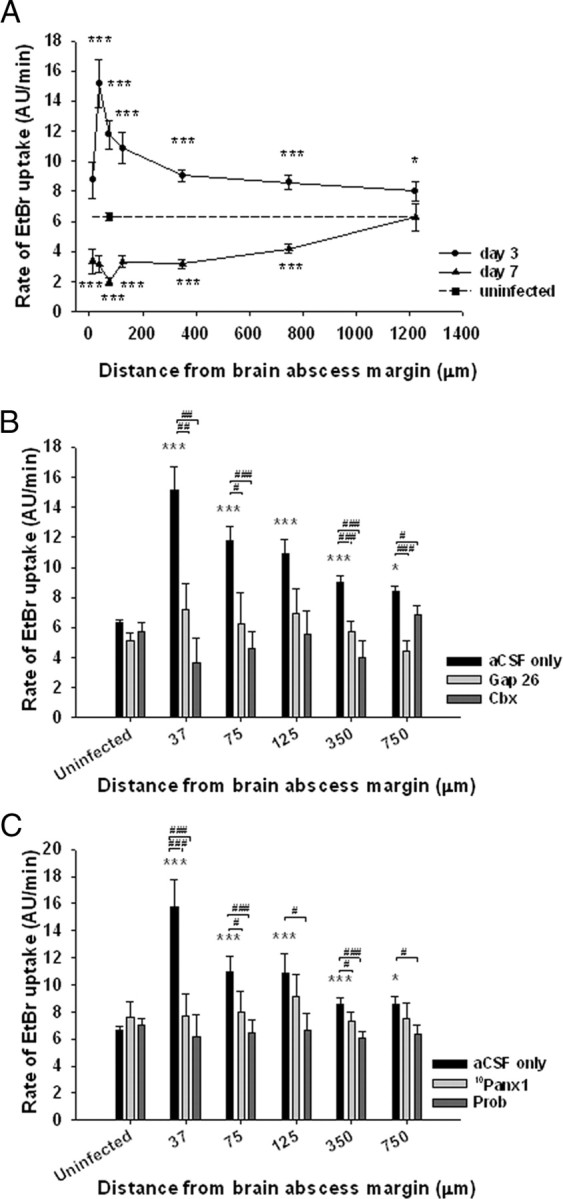Figure 4.

Hemichannel activity is increased in GFAP–GFP+ astrocytes neighboring the inflammatory milieu in a region-dependent manner. Brain abscesses were induced in GFAP–GFP mice, and the extent of hemichannel activity was evaluated in GFAP–GFP+ astrocytes in acute brain slices at day 3 or 7 after infection or uninfected animals by monitoring the rate of EtBr uptake. A, Region-dependent rates of EtBr uptake by GFAP–GFP+ astrocytes radiating outward from the brain abscess margins. The gap junction/hemichannel blockers Gap26 (100 μm) and Cbx (50 μm) (B) as well as 10Panx1 (100 μm) and Prob (500 μm) (C) reduced the rate of astrocyte EtBr uptake at day 3 after infection, confirming hemichannel activity. Significant differences between uninfected and brain abscess groups at day 3 or 7 after infection are denoted by asterisks (*p < 0.05, ***p < 0.001), whereas alterations between slices incubated with Gap26, Cbx, 10Panx1, or Prob versus aCSF only are indicated by hatched signs (#p < 0.05, ##p < 0.01, ###p < 0.001). Acute brain slices from a total of 25 mice were used in these experiments. The data presented in A were obtained from 418 astrocytes from uninfected slices and 627 and 289 astrocytes from slices at day 3 or 7 after infection, respectively. The data in B were calculated from 607 astrocytes in uninfected brain slices and from 855 astrocytes at day 3 after infection and in C from 996 astrocytes at day 3 after infection. AU, Arbitrary units.
